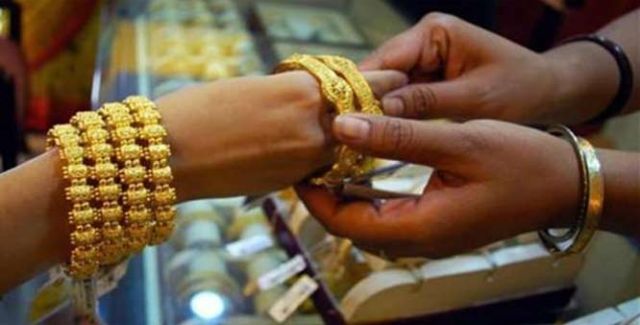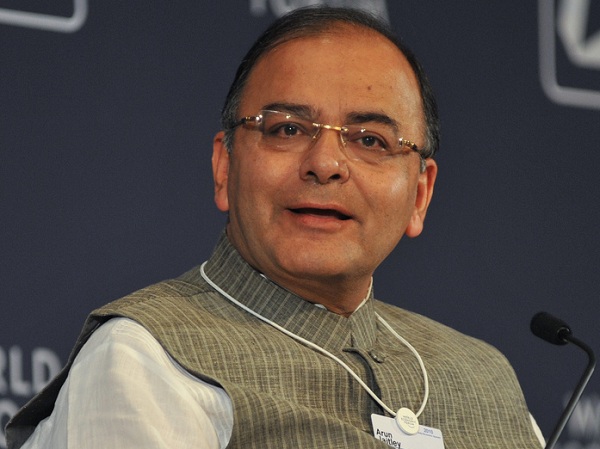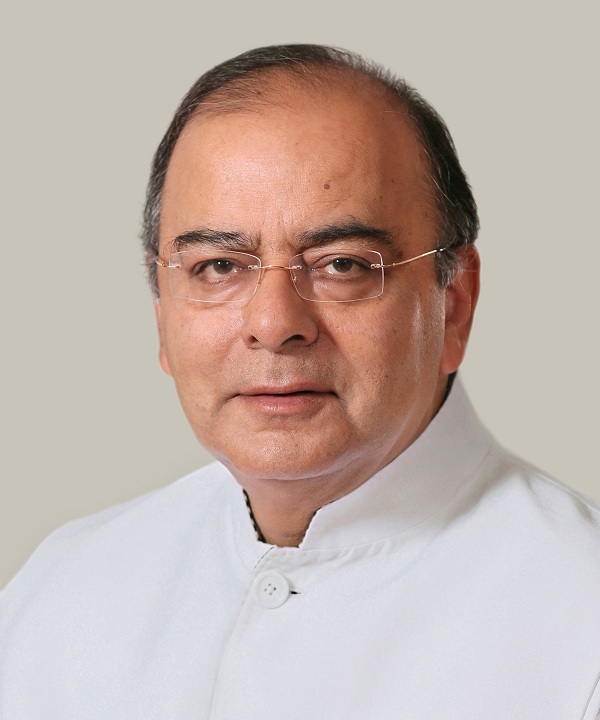
by admin | May 25, 2021 | Business, Commodities, Commodities News, Medium Enterprise, SMEs
 Kolkata : Despite subdued demand for gold jewellery during the current fiscal, the outlook for the retail industry of jewellery made of the yellow metal remained positive, and over the medium to long term the gold jewellery demand growth is projected at 6-7 per cent, said a report released on Friday.
Kolkata : Despite subdued demand for gold jewellery during the current fiscal, the outlook for the retail industry of jewellery made of the yellow metal remained positive, and over the medium to long term the gold jewellery demand growth is projected at 6-7 per cent, said a report released on Friday.
“There will be stable outlook on gold jewellery retail industry. Gold jewellery demand in India varies across rural and urban markets, right from the type of jewellery bought, timing of purchases,” said a report by rating agency ICRA.
Following a strong nine per cent volume growth in the last fiscal, gold jewellery demand has been subdued in 2018. Jewellery sales during the critical festive period (August to November) were relatively sluggish due to various factors like elevated gold prices and floods in Kerala.
“Over the medium to long term, gold jewellery demand growth is projected at 6-7 per cent supported by the cultural underpinnings, evolving lifestyle, growing disposable income, favourable demographic dividend and the growing penetration of organised sector,” it said.
Being a price-sensitive market, higher gold prices result in deferment of purchases by consumers. Gold prices increased by over six per cent in the last one year with consequent impact on consumption demand, the rating agency said.
This apart, financing to the gems and jewellery sector has been under increased scrutiny in the last one year following reporting of fraud by a few lenders on exposures to leading diamond jewellers, and on exposures to a couple of gold jewellery retailers in south India.
According to it, tightened credit has affected the store expansion plans and working capital position of industry players, especially the unorganised ones.
The agency also said the performance of many organised players has been relatively better.
“Post currency demonetisation and implementation of Goods and Service tax (GST), a marked shift is visible from unorganised to organised trade. This apart, assurances on quality, purity, and availability of wider design range and rising preference for fashion jewellery further supported organised trade,” it said.
Going forward, these regulatory measures are expected to continue to accelerate the formalisation of the sector, and the market shares of organised players are accordingly expected to increase.
—IANS

by admin | May 25, 2021 | Business, Commodities, Commodities News, Large Enterprise, Markets, News
 New Delhi/Mumbai/Kolkata/Chennai/Bengaluru : Come Dhanteras, and the hunger for gold, so visible among Indians, has helped them tide over the impact of demonetisation and the Goods and Services Tax (GST), as customers thronged jewellery stores on Tuesday.
New Delhi/Mumbai/Kolkata/Chennai/Bengaluru : Come Dhanteras, and the hunger for gold, so visible among Indians, has helped them tide over the impact of demonetisation and the Goods and Services Tax (GST), as customers thronged jewellery stores on Tuesday.
“We have witnessed very good footfall. Demand for jewellery is definitely higher this year than investment demand,” Balram Garg, Managing Director, P.C. Jewellers, told IANS in Delhi, adding “We expect sales to go up by 30 per cent on pent up demand due to various regulatory issues”.
Price of 24 carat gold in the national capital was hovering around Rs 30,000 per 10 grams on Tuesday.
‘Dhan’ in Hindi means wealth, and ‘Terah’ means number 13. Dhanteras, accordingly, means, the 13th Day of the Krishna Paksha in the month of Ashwin in Indian Lunar Calendar, which in Hindu tradition is devoted to wealth.
Many seek to buy gold, silver and utensils and invoke the gods to bring in prosperity. In several parts of the country, people also worship the Goddess of Wealth — Lakshmi.
Echoing similar upbeat sentiments as Delhi, Jayantilal Challani, President of Madras Jewellers and Diamond Merchants Association and a partner in Challani Jewellery Mart, told IANS: “The demand for gold and silver is good. First Dhanteras post-GST regime and also demonetisation and income disclosure scheme issues has settled down. The footfalls in the stores are good.”
“During the last six-to-eight months, sales were a bit dull. But for the past few days, the demand is good. The prices have also come down. Today the price of gold is around Rs.2,837 per gram in Chennai,” Challani added.
The Centre’s recent decision to not make mandatory furnishing of PAN or Aadhaar card details for buying jewellery in cash up to Rs 200,000 had also ushered in a positive sentiment among buyers. The earlier limit was Rs 50,000 as part of the anti-money laundering (AML) guidelines.
“Gold price remains stable and range-bound in the run-up-to the festivals at around Rs 3,000 per gram, which is a positive factor. Footfalls in retail stores have been good since morning. However, compared to last year, sales growth would be tepid,” Pankaj Parekh, Chairman of India Bullion and Jewellers Association, Regional (East), told IANS in Kolkata.
Gold is at the centre of festivities and gifting traditions in India, particularly during Dhanteras, Diwali and the wedding season that follows.
“Currently, gold demand seems to be recovering after withdrawal of the AML guidelines. Policy reforms in quick succession in recent years have targeted transparency and the industry is transitioning under GST to a more organised structure, with long term benefits,” said Somasundaram P.R., Managing Director, India, at World Gold Council.
“It appears that demand for gold jewellery and branded coins seems to be better than the past quarter, particularly in relation to organised players. A good monsoon and stable gold prices are definitely encouraging consumers to make token purchases for the auspicious festivals. The ensuing wedding season, however, holds the key for the quarterly demand performance,” he added.
In Mumbai, All India Gems & Jewellery Federation Chairman Nitin Khandelwal said that with AML issues having been amicably resolved, buyers’ sentiments have been boosted.
“Though the footballs are increasing, we do not expect any growth over last year’s sales. We shall be happy even if last year’s sales/quantity figures are achieved, coming after demonetisation, GST and RERA (Real Estate Regulatory Authority),” Khandelwal told IANS.
However, the demand for gold jewellery for the Diwali festival in Bengaluru remained subdued because of negative sentiment and regulatory issues. Continuous rains for several days may also have done their bit to dampen enthusiasm for buying gold.
“Though GST is not an issue as the rate is only 3 per cent on gold and jewellery, customers are wary of buying, as PAN card is mandatory if the bill is more than Rs 2 lakh,” Bengaluru Jewellers’ Association President Y.S. Ravikumar told IANS.
“Owing to less purchasing power among the upper and middle classes, demand for gold or jewellery has not picked up since demonetisation on November 8 last year,” he added.
Also with continuous rains in the city over the last fortnight, footfalls in retail gold shops or showrooms across the place have been 40 per cent less than they were last year.
—IANS

by admin | May 25, 2021 | Business, Economy, News
 Kolkata:(IANS) Justifying the imposition of one percent excise duty on gold jewellery, union Finance Minister Arun Jaitley on Sunday said a luxury item like gold should not be exempted from the manufacturing tax when the country is moving towards Goods and Services Tax.
Kolkata:(IANS) Justifying the imposition of one percent excise duty on gold jewellery, union Finance Minister Arun Jaitley on Sunday said a luxury item like gold should not be exempted from the manufacturing tax when the country is moving towards Goods and Services Tax.
“There is no reason why a luxury item like gold should be kept out of the ambit of a manufacturing tax like excise duty. Since the manufacturing tax is levied on essential commodities like steel, cement, jute, cotton and others, why not on gold.
“The country is to move towards Goods and Services Tax (GST). Gold will also follow towards GST. Most states levy value added tax on gold,” he said.
He also noted that if gold is kept out of GST ambit, tax rate on rest of the goods will have to be increased. “There is no reason why a luxury item should be exempted from the tax and a higher rate of tax be imposed on other goods,” he said.
The government, in the Budget for 2016-17, had proposed one percent excise duty on jewellery without input credit or 12.5 percent with input tax credit on jewellery excluding silver other than those studded with diamonds and precious stones.
Jewellers went on strike opposing one percent excise duty on gold jewellery. The strike enters 40th day on Sunday.
The central government subsequently clarified even for one percent excise duty, manufacturers were allowed to take credit of input services, which could be utilised for payment of duty on jewellery.
It further said that only jewellers, whose turnover in the preceding financial year was more than Rs.12 crore, will be liable to pay the excise duty and those having turnover below Rs.12 crore would be eligible for exemption unto Rs 6 crore during next financial year.
“Jeweller’s private records or records for state value added tax or records for Bureau of Indian Standards (in the case of hallmarked jewellery) will be accepted for all central excise purposes,” it clarified.
Also, there is no requirement to file a stock declaration to the jurisdictional central excise authorities, it added.

 Kolkata : Despite subdued demand for gold jewellery during the current fiscal, the outlook for the retail industry of jewellery made of the yellow metal remained positive, and over the medium to long term the gold jewellery demand growth is projected at 6-7 per cent, said a report released on Friday.
Kolkata : Despite subdued demand for gold jewellery during the current fiscal, the outlook for the retail industry of jewellery made of the yellow metal remained positive, and over the medium to long term the gold jewellery demand growth is projected at 6-7 per cent, said a report released on Friday.


